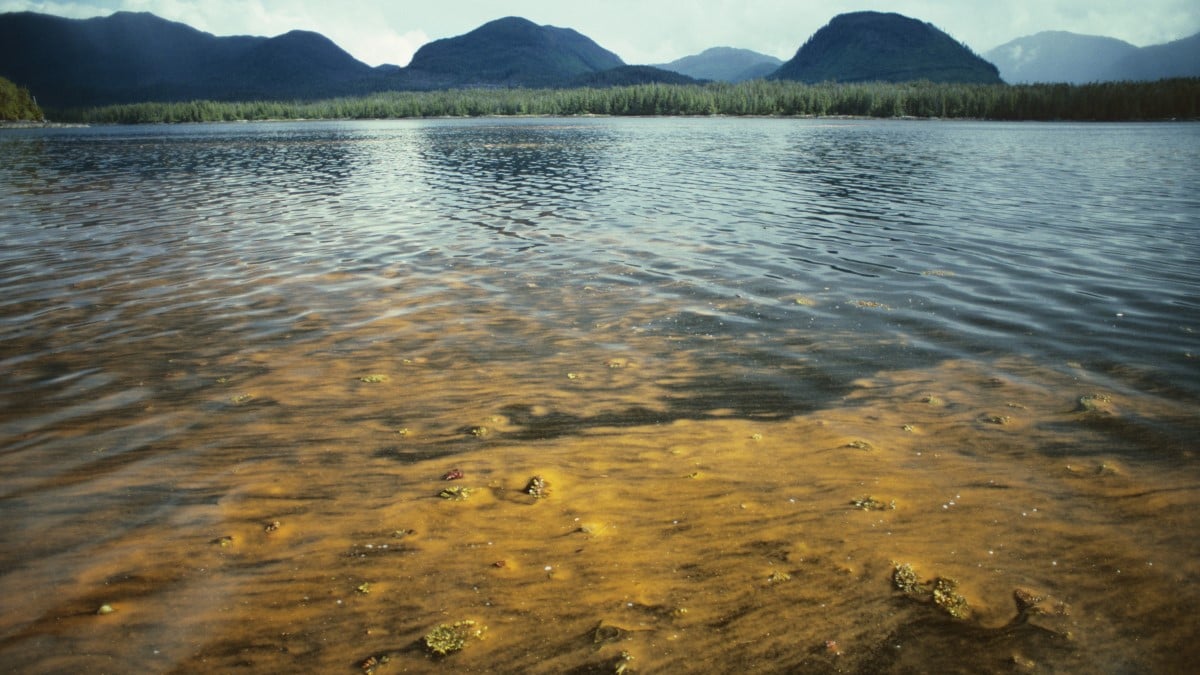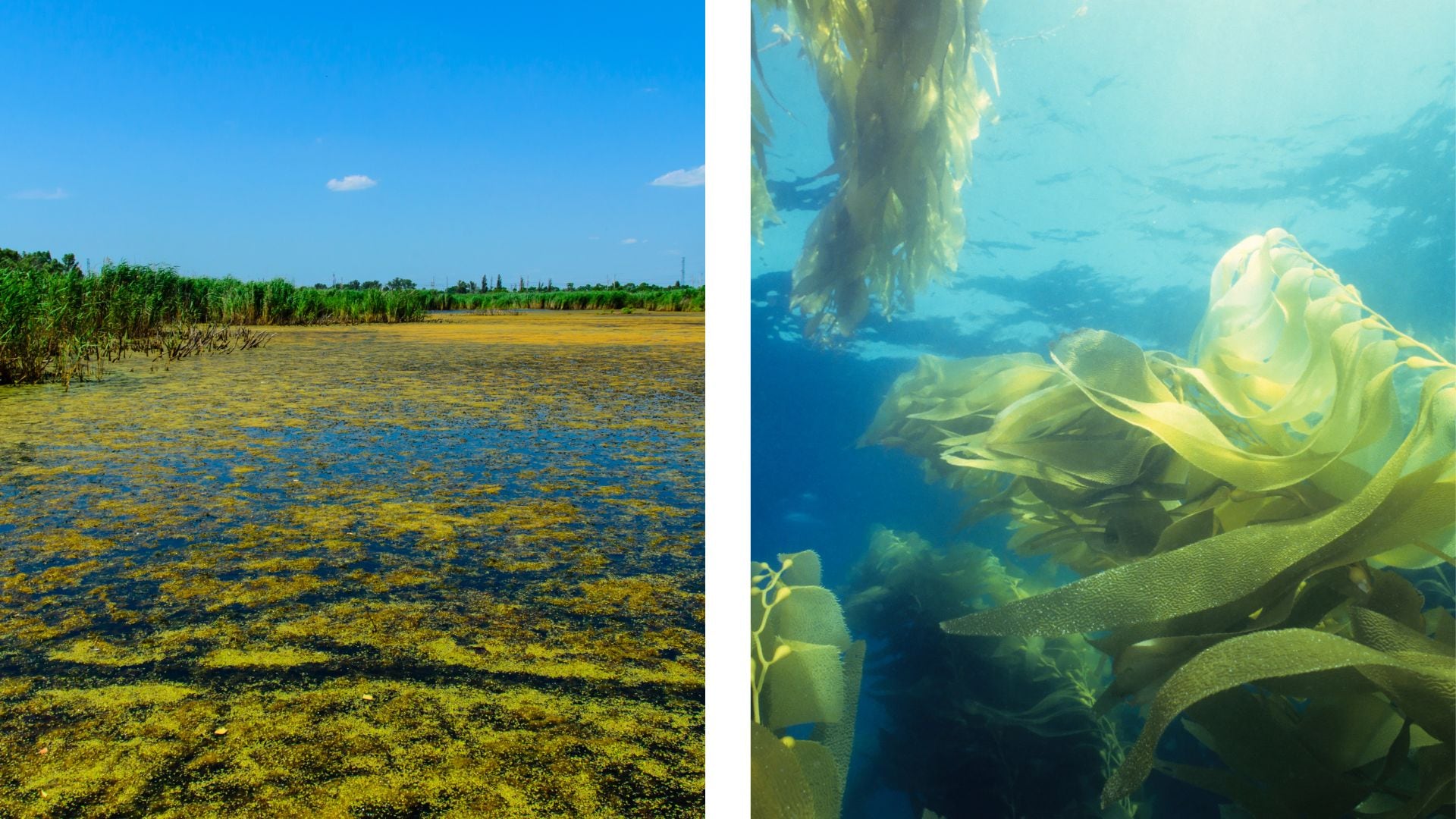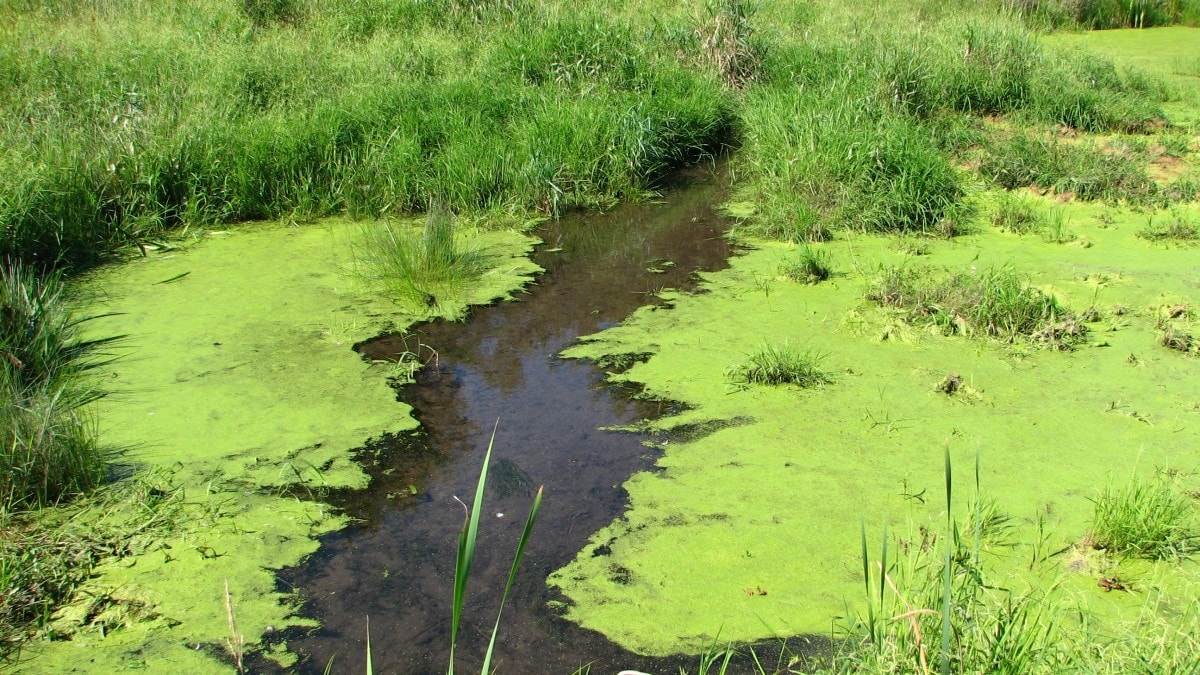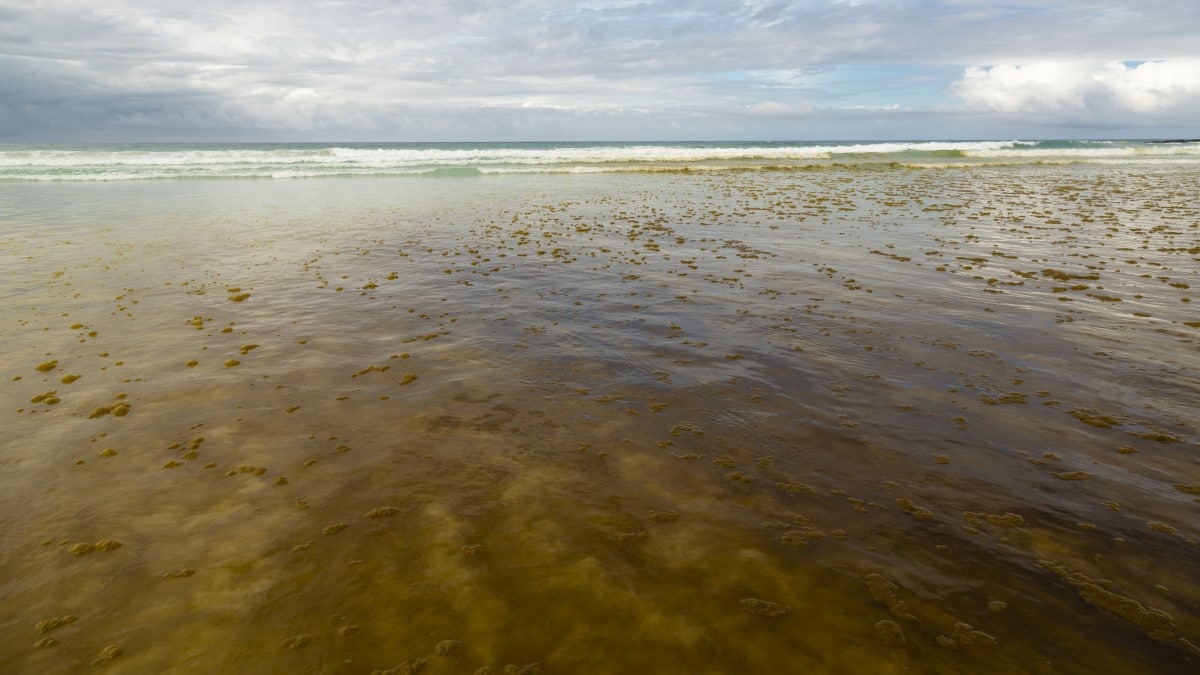Key points
- Some types of algae are harmful when they grow too quickly or make toxins (poisons).
- Cyanobacteria (blue-green algae) cause most harmful algal blooms in fresh water.
- Diatoms or dinoflagellates (red tides) cause most harmful algal blooms in salt water.

Overview
Algae are a natural part of the environment. They are important because they make oxygen that living things need. However, some types of algae can be harmful if too much grow at once or if they make toxins.
Terms to know
Algae
Algae are a group of plants usually found in water. Algae can grow in all types of water, including salt water, fresh water, and brackish water. Brackish water is a mix of salt and fresh water.
Algae that live in water can be grouped into two categories, seaweed and phytoplankton.
- Seaweed are large plants made up of many cells.
- Phytoplankton are small, single-celled organisms (living things like plants or bacteria).
Both seaweed and phytoplankton sometimes grow quickly, or bloom. Some of these algal blooms harm people, animals, or the environment. Most harmful algal blooms that make people and animals sick are caused by phytoplankton.

Many types of phytoplankton can cause harmful algal blooms. However, three types of phytoplankton cause most blooms that make people and animals sick:
- Cyanobacteria (sometimes called blue-green algae)
- Dinoflagellates (sometimes called microalgae or red tide)
- Diatoms (sometimes called microalgae)
Cyanobacteria
Cyanobacteria are plant-like bacteria that use sunlight to make food. Although they are not true algae, cyanobacteria are also known as blue-green algae.
Cyanobacteria grow in water and moist soil. They more commonly grow in fresh water but sometimes can be found in salt water or brackish water.
Diatoms and dinoflagellates
Dinoflagellates and diatoms are two different types of phytoplankton and are sometimes called microalgae. They grow primarily in salt water or brackish water.
Types
Harmful algal blooms grow in fresh water, salt water, and brackish water around the world. This includes water people use for drinking or recreation.
Harmful algal blooms vary in size and how long they last. Some blooms cover just a small area of a water body and others may cover hundreds of square miles. Harmful algal blooms can last for days to more than a year depending on environmental conditions.
In fresh water
Cyanobacteria (blue-green algae) cause most harmful algal blooms in fresh water. These blooms occur more often in still water, such as lakes or ponds, but can also happen in rivers or streams.
In the United States, harmful algal blooms caused by cyanobacteria have been found in freshwater bodies in:
- All 50 states
- Puerto Rico
- U.S. Virgin Islands
Even though cyanobacteria are a type of bacteria, they do not infect people or animals. Instead, cyanobacteria can harm people or animals by making toxins or growing too dense.
Common toxins made by cyanobacteria include:
- Microcystin
- Cylindrospermopsin
- Anatoxin
- Guanitoxin, formerly known as anatoxin-a(S)
- Saxitoxin
- Nodularin
- Lyngbyatoxin

In salt water
Diatoms and dinoflagellates (red tides) cause most harmful algal blooms in salt water, such as oceans, and brackish water, such as estuaries. Less commonly, cyanobacteria can cause harmful algal blooms in salt or brackish water.
Harmful algal blooms in salt water have affected all coastal U.S. states.
Dinoflagellates and diatoms can harm people and animals by making toxins or growing too dense.
Common toxins made by dinoflagellates and diatoms include:
- Brevetoxin
- Azaspiracid
- Ciguatoxins
- Okadic acid
- Saxitoxin
- Domoic acid

